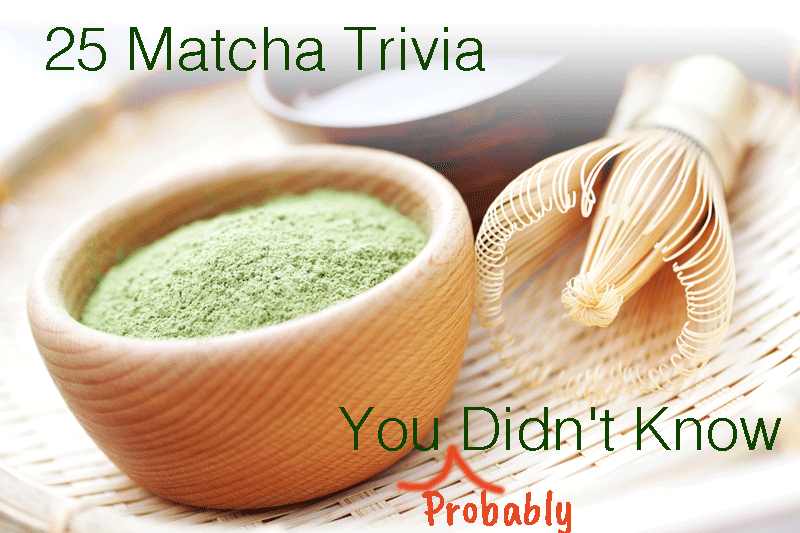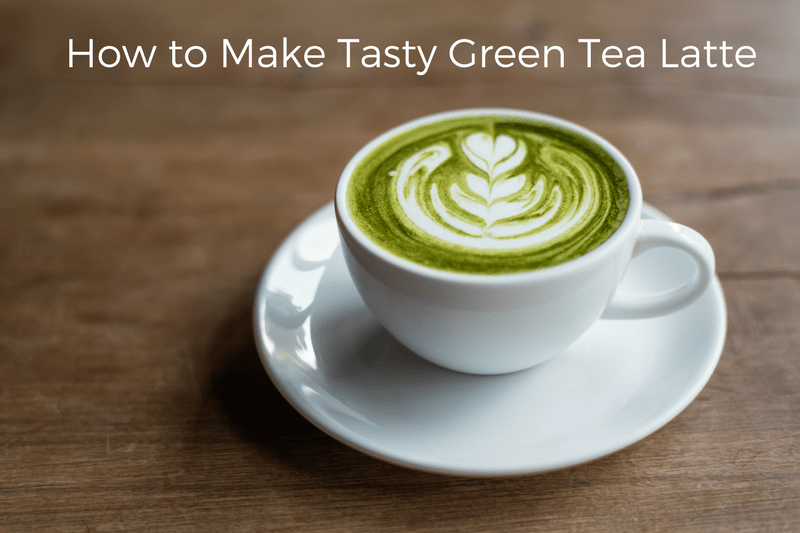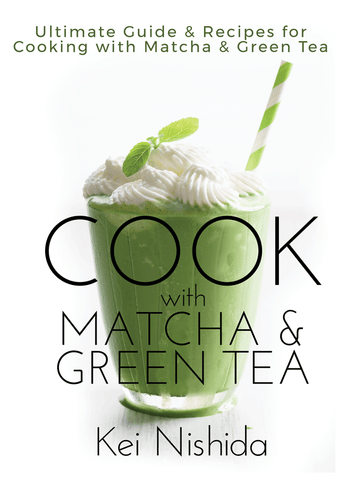30 Surprising History about Japanese Green Tea You (Probably) Didn't Know

History tells us that green tea has been a part of Japan's culture for centuries. Today, green tea is still an important part of Japanese culture. If you were to visit Japan, you would find bottled and canned green tea wherever you went. You would even discover the Japanese love green tea ice cream.
It may surprise you to know that green tea in Japan is quite different from Chinese green tea in many ways. However, it was from China that green tea traveled into Japan.
The beginning - China (From 6000BC)
- The Chinese were the first to discover the health benefits of green tea 8000-9000 years ago.
The legendary emperor Shennong, who is also the father of Chinese medicine and agriculture, is said to have discovered tea around 2700 BC which is a well-known myth. In Lancang valley in Yunnan tea plants were discovered and confirmed in 2012. The Hemudo tribe cultivated tea between 6000-3500BCE.
- Evidence in Emperor Jing of Han in Xi"an's mausoleum indicates that tea made from Camellia, green tea, was drunk by emperors of the Han Dynasty back in the 2nd century BC.
- Around the 1st century BC, scholars compiled herb lore into a book called “The Divine Farmer’s Herb-Root Classic”; it included tea among the herbs.
- In 59 BC, Wang Bao from the Sichuan Province wrote “A Contract with a Servant,” the first known book to describe how to buy and prepare tea. “A Contract with a Servant” is also the first known book to mention tea utensils. During Wang Bao’s time, tea was still considered a luxury.
- During the Tang Dynasty (618-907), the cultivation of green tea throughout China began. Back then, the leaves were dried and then pressed into a solid cake. This made it easy to carry without damaging the leaves.
- Lu Yu wrote Cha Jing or “The Classic of Tea” (AKA Cha Ching) around 760 AD during the Tang Dynasty. In his book, Lu Yu described how to brew green tea and how to cultivate it as well. He talked about the tools for brewing and cultivating the tea. Also, included in his book were the health benefits of green tea that were known by the Chinese at that time. It was from this book that the style of the tea ceremony evolved.
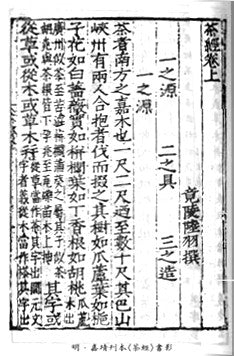
The Classic of Tea written by Lu Yu in 760 AD
From China to Japan (From 618 AD)
- During the Tang dynasty of China in the period between 618 and 907, the first seeds of tea plants were brought to Japan. Cultural exchanges between the two countries were taking place at that time, and the sharing of green tea seemed only natural. (http://japanese-tea-ceremony.net/history.html)
- The tea plants grown in Japan during the Nara period from 710 to 794 were used by noblemen and priests only. They used the tea as medicine. Sometime during the end of the Tang dynasty of China, drinking tea was transformed from medicine to a daily beverage. The transforming of tea from medicine to beverage didn't take place in Japan until a long time after the Chinese transformation.
- Emperor Saga (786-842), who ruled during the early Heian period, is said to have encouraged the growing and drinking of tea. Tea drinking is first mentioned in Japanese literature in 815, Nihon Kouki. Nihon Kouki wrote the first reliable account of drinking tea in Japan. It basically said that in the year 815, Emperor Saga visited the Suufuku temple in Japan in order to worship the Buddha. After that, he visited the highest-ranked monk, Eichu, at the Bonshaku temple. Eichu offered the Emperor Saga tea that he, himself, had brewed. (http://www.myjapanesegreentea.com/emperor-saga)
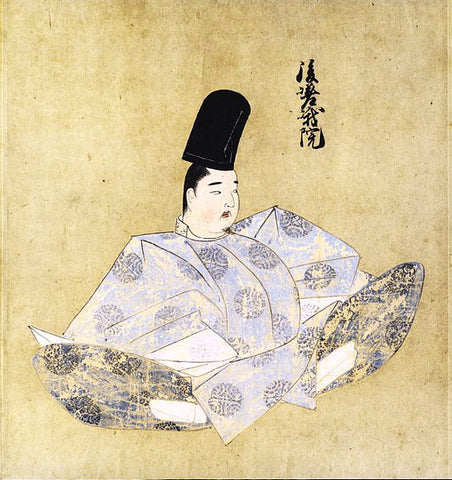
Emperor Saga (786-842)
- Buddhism was introduced to Japanese society during the Nara and Heian era. At that time a number of Buddhist monks traveled to China in order to learn about Buddhism. They visited various schools. When they returned to Japan, they founded their own schools in Japan. It was during this time at the start of the Heina period (794-1185) that Saicho and Kukai, two Buddhist monks, returned to Japan bringing tea seeds.
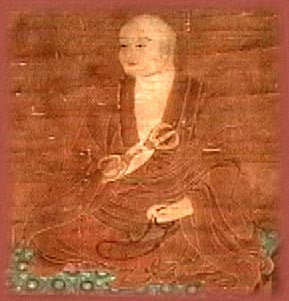
Kukai (774–835)
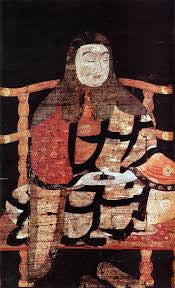
Saicho (767 – 822)
- Since the emperor Saga knew the two Buddhist monks who brought the green tea seeds to Japan, Kukai and Saicho, personally, this most likely was not the first time the emperor drank tea. A few months later, the Emperor Saga ordered tea plants to be cultivated. He even had tea planted inside the imperial palace land.
- It wasn't until some time after the Emperor Saga ordered the tea cultivation that tea became popular in Japan. However, being the first imperial effort at growing tea must have influenced the history of tea in Japan.
- Regrettably, financial troubles of the Emperor caused by his many concubines and 49 children forced him to renounce his throne in 823. In addition, many droughts hindered the growing of the tea.
- Buddhist monks loved green tea so much because it helped them stay awake for long hours during meditation. Many Zen monks in Japan today still uses tea to help them soothe the body and mind.
Eisai, the Father of Japanese Tea Culture (1141 – 1215)
- After his second trip to China taken in order to learn about Buddhism in 1187, Eisai became certified as a Zen teacher. After spending four years as a disciple of Xuan Huaichang, a master of the Rinzai school of Zen Buddhism, he was the first Japanese monk to receive certification to be a Zen teacher. (http://www.myjapanesegreentea.com/eisai)
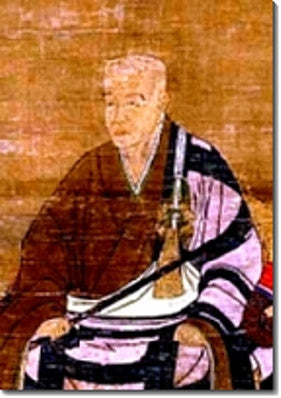
Eisai (1141 – 1215)
- When Eisai returned to Japan in 1191, he brought the Rinzai Zen teachings to Japan as well as tea seeds. At first, he planted tea seeds in Mount Sefuri. He also gave some tea seeds to Myoue Shounin, a Kousanji temple monk of Kyoto. It is believed that Eisai gave three tea seeds to Myokei Shonin and also taught her how to cultivate the seeds. By Myoue planting the tea seeds near his temple, he began the practice of tea drinking in the Uji region of Japan. Soon after, the tea cultivation spread north and became Uji Tea currently known worldwide.
- Myokei wrote a poem about planting the first seedlings in Uji. His poem is engraved on a stone tablet at the entrance to Manpukuji Temple in Uji. (http://www.ujicha.com/english/culture/)
- In a written account in 1214, it was reported that Eisai gave Shogun Minamoto tea to drink when Shogun was suffering from a hangover. Eisai also gave Shogun his book titled Kissayojoki 喫茶養生記 (AKA Tea Drinking Cure). His book included information about the health benefits of tea, how to cultivate tea as well as how to prepare it.
- In this book, he mentions that bitter foods are good for the heart. He encouraged drinking bitter green tea to make the heart healthier and increase energy in the body. In this text, Eisai actually claims he believed it was easier for monks to enter enlightenment if they drank tea before practicing zazen meditation.
- Before the introduction of tea to Japanese culture by Eisai, only nobles and monks drank tea. With Eisai’s reintroduction to tea in Japan, the lower classes also began to drink it. A year later in 1202, Eisai died and became known as the father of Japanese tea culture.
- Monk Eisai is given credit for making tea popular in Japan. He championed green tea as a healthy drink. As a Zen monk, he also used green tea as part of his meditation. It's said that Japanese tea ceremony was derived from a ceremony where monks drank tea in front of the Bodhi Dharma.(http://academic.mu.edu/meissnerd/halaska.html)
From Nobel to Everyone (From 1300AD)
- In feudal Japan, the green tea from the first harvest in Uji traveled 500km to Edo on foot. It took 12-14 days for the first tea of the season to reach Edo. Everyday people were not allowed to drink the green tree from the first harvest until the tea arrived.
- The journey of Uji's first tea harvest to Edo was considered so important that the roads, bridges and buildings along its route were improved. Everyone had to kneel on the ground as the first harvest tea traveled past them.
- The samurai class began to hold tea competitions. Tea competitions were once popular in China, but eventually the more structured and quiet Japanese tea ceremonies largely supplanted tea competitions. (https://www.itoen.co.jp/eng/allabout_greentea/history_of_tea.html)
- The tea competitions of the Japanese elite often included gambling, drinking and feasting. When the Hundred Years of Civil War devastated the countryside and the economy, the opulent tea competitions dwindled. (The Urasenke Foundation, http://www.urasenke.org/tradition/)
- Samurai drank green tea before going into battle, due to its ability to give controlled energy.
- Japanese aristocrats began building “tea cottages” during the Ashikaga Period (1338-1573) specifically for performances of the tea ceremony. The upper class simply loved relaxing to the sound of boiling water and watching the graceful movements of the tea master prepare delicious green tea. While all the tea houses look simple, they were all designed to best accentuate the tea ceremony.
- In 1504, ceramic pots were brought from Ming China to Japan. This resulted in the formation of the method of steaming green tea in these ceramic pots that became widely used in southern Japan. This was also the start of the Ceramic ware culture in Japan.
- The first tea room known as a "Chashitsu" was created during the Momoyama Period (1573-1603) in the Nogoya Castle and the tea ceremony was also refined.
- The first tea shop was opened by a Zen Priest, Kouyugai Baisaou, who believed that green tea shouldn't be for only the elite class and should be used by the common folk as well. Interest in green tea then grew in Japan as a result.
- Japanese Buddhist monk Baisao became widely known for selling sencha tea around 1735, and is credited with helping make sencha tea popular. Baisao, the Japanese monk, was known as one of the first sencha masters after his death.
Baisao (1675–1763)
- In ancient Japan, green tea, Matcha, was in limited supply and expensive. Most Japanese could only afford to drink brown tea. Then Sohen Nagatani discovered a less expensive way to process and preserve the tea leaves by steaming instead of pan roasting them. When his method spread across Uji, green tea became more affordable. (Read more about steaming and deep steaming green tea on my other article)
- The people of Uji were so grateful to Sohen Nagatani for improving how tea is processed that they built a shrine for him. Every October the first, Japanese tea merchants visit his grave to show their thanks for his work.
Japan to the World (From 1600AD)
- The exporting of Japanese green tea didn’t begin until began the Edo Period (1603-1868).
- After the Tokugawa Shogunate opened the Japanese ports to trade, tea became a top export. In 1859 alone, Japan exported 181 tons of tea. (https://www.itoen.co.jp/eng/allabout_greentea/history_of_tea.html)
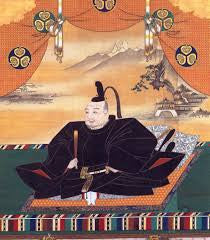
Tokugawa Iyeyasu (January 31, 1543–June 1, 1616)
- The Japanese first exported tea in 1610. They sold the tea to the Dutch East India Company in Nagasaki who shipped the tea to Europe.
- In the late 1850s, the Japanese opened some of their ports to foreign trade; tea was one of their main commodities.
- In 1853 that a female merchant known as Oura Kei export green tea from Japan. She offered samples of the tea to the United Kingdom, America and Saudi Arabia. The first merchant to place an order for green tea from a Japanese merchant, Oura Kei, was an American merchant who ordered 6 tons of the tea. The United Kingdom's first order for green tea was for 60 tons. In order to have enough tea for the order, the Japanese merchant, Oura Kei, collected green tea from all of Kyushu.
- The tea ceremony has influenced Japan's history because many powerful lords employed tea masters and practiced tea ceremony. Oda Nobunaga used tea ceremony to help impress Portuguese merchants. Toyotomi Hideyoshi loved tea ceremony and frequently met his political allies with tea ceremony. (http://think.iafor.org/listening-to-the-waves-chanoyu-outside-japan/)
- The first foreigners to encounter tea ceremony were Portuguese and Spanish merchants in the 16th century. However, it was the Jesuit missionaries who studied tea ceremony for its religious and social values. These early missionaries were encouraged to learn and practice tea ceremony.
- Rolling machines began replacing handmade production of tea at the end of the Meiji era between 1869 and 1912.
- Japanese green tea was first consumed by the upper classes. It is still the nation’s most popular drink. (https://en.wikipedia.org/wiki/Green_tea)

Green tea is Japan's most popular drink
Above is part of a chapter from my recent book: Green Tea Mania : 250+ Green Tea Facts, Tips & Trivia You (Probably) Didn't Know
Please Click Below Image to Get My Book Green Tea Mania : 250+ Green Tea Facts, Tips & Trivia You (Probably) Didn't Know from Amazon (Both Printable Format and Kindle Version Available)
Language: English
ISBN-10: 1544093322
ISBN-13: 978-1544093321
Product Dimensions: 8.2 x 0.3 x 6 inches
Shipping Weight: 7.8 ounces
Green Tea Mania is a must have book for trivia lovers and fans of green tea. This is author Kei Nishida’s second book on green tea, following up his earlier work, I Will Teach You to Be Healthy Using Japanese Green Tea. Green Tea Mania delivers 200+ facts and an array of delightful pictures in its 120 pages. This full color trivia tome helps paint a picture of not only the health properties of this magical leaf, but also its history and cultivation.
Did you know that Black Tea, Oolong Tea, and Green Tea come from the same plant or that their labels really just describe where the leaf was left off in the fermentation process? Learn about the unusual uses for Green tea such as “Green Tea Beer” or cake. Find out how to get more of the antioxidant Catechin out of tea by adding one simple ingredient. These facts and hundreds more are all contained inside this beautiful guide to Green Tea.
This book is a must-have for the health conscious or Green Tea enthusiast.
Click Here to Get This Book On Amazon Now
Related Articles You May Be Interested In
Get Free Download
If you have ever thought that Green Tea is an ìacquired tasteî or that it is ìtoo bitterî to enjoy, weíre here to change your mind! We want everyone to experience the health benefits of Green Tea and show you that this can be an amazing, refreshing, and delicious drink when made correctly. With just a few tips on how to brew this powerful leaf, we can change your mind about the taste and enjoyment of drinking Green Tea.
Donít miss out on the health benefits of tea!
- Improve health
- Increase brain function
- Regulate weight
- Lower your risk of cancers
- Reduce risk of heart disease
- Lowers risk of diabetes
We know that you will love this tips to brewing tea and getting the most flavor and elegance out of every cup. Sign up for our newsletter and get this great informative manual on brewing green tea. You will learn what it is that makes it one of the most popular beverages in the world.
The E-Book also includes the chapter of Kei Nishida's book, "Art of Brewing Japanese Green Tea" where he teaches you how to brew hot and cold Japanese Green Tea.
Also in Japanese Green Tea Lovers in India
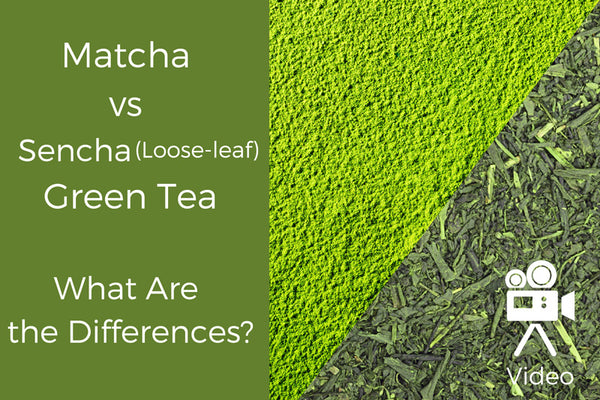
TYPES OF TEA: MATCHA VS SENCHA GREEN TEA: WHAT ARE THE DIFFERENCES?
When it comes to different types of tea, matcha and sencha green tea are two many people have questions about! Get answers in this post.

Is Green Tea Good Against Depression?

What is the best way to store your matcha & Japanese green tea?
5 Essential Storage Rules for Matcha and Japanese Green Tea
Read on to learn how to store matcha the proper way to ensure that you get the most out of this ancient elixir.




